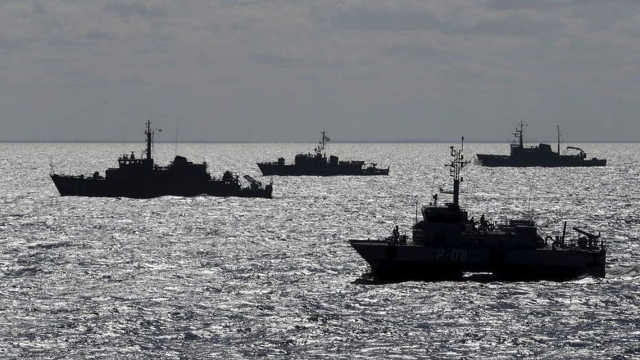This publication is a continuation of the article by the Professor of the University of Lodz, Dr. Robert Czulda (Robert Czulda). In the first part, the author considered the tasks and capabilities of the Baltic Naval Forces, as well as some prospects for the development of the Estonian Navy. This passage also begins with the plans of the Merewaga command.
In addition to technological changes, Estonia has also initiated organizational transformations. In January 2023, the unification of the naval units of the defense department will take place (Merevägi) and the Police and Border Guard Department (Politseija Piirivalveamet, PBGB). As a result, two separate operational centers will be merged: the civilian Maritime Surveillance Center and the military Maritime Operations Center. This is the largest state reform in the near future. The main objective is to improve Estonia's situational awareness, reduce the risk of duplication and increase national preparedness. Maritime rescue operations will remain under the jurisdiction of the PBGB, while maritime situational awareness, maritime border surveillance and environmental pollution control, together with the relevant vessels, will be transferred to Merevyagi.
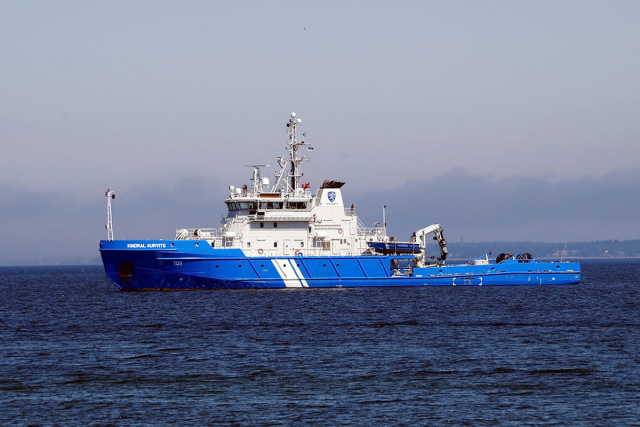
Estonian Border Guard Ship PVL-101 KINDRAL KURVITS
In addition to the new tasks, Merevyagi will have access to the main PBGB vessels, in particular, the 64-meter PVL-101 KINDRAL KURVITS (in operation since 2012) and the 24-meter VALVE (2008) for cleaning from pollution; as well as the 30-meter patrol boat PVL-103 PIKKER (1996 year) and hybrid-propulsion PVL-203 RAJU (2018). The last two mentioned units can perform several tasks, such as search and rescue, pollution control, fire and hydrographic missions. PBGB will still get the right to use some Merevyagi ships to support its own operations.
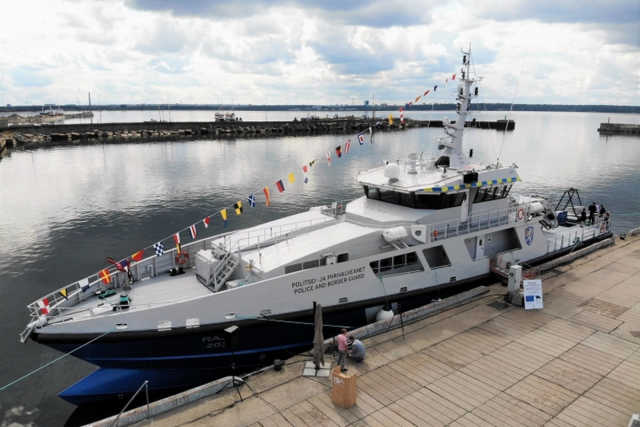
PVL-203 RAJU boat with hybrid engine
Plans for future acquisitions are relatively limited, although Russia's current attack on Ukraine may expand the current position. Back in October 2021, Estonian Defense Minister Kalle LAANET hinted that Tallinn wants to increase its national defense potential, including in the naval sphere. In the same month, the Estonian Center for Defense Investment (ECDI) signed a contract with Proteus Advanced Systems, a joint venture consisting of Israel Aerospace Industries (IAI) and ST Engineering Land Systems, to equip the Estonian Defense Force with BLUE SPEAR anti-ship missile systems (5G SSM) with a maximum firing range of 290 km. Later, in December of the same year, Estonia received the first batch of sea mines delivered from Finland.
It also turned out that Estonia has a pilot project for the construction of unmanned vessels. No details have been reported yet, except for the intention to launch the first ship in 2026. This aspiration seems realistic, since Estonia already has considerable experience in the field of unmanned solutions. In addition to Milrem Robotics , the leader of an international consortium with the task of developing a standardized European iMUGS (Integrated Modular Unmanned Ground System) – Estonia has already designed the NYMO, a civilian, autonomous ship that was developed by Tallinn University of Technology. The prototype was launched in 2019
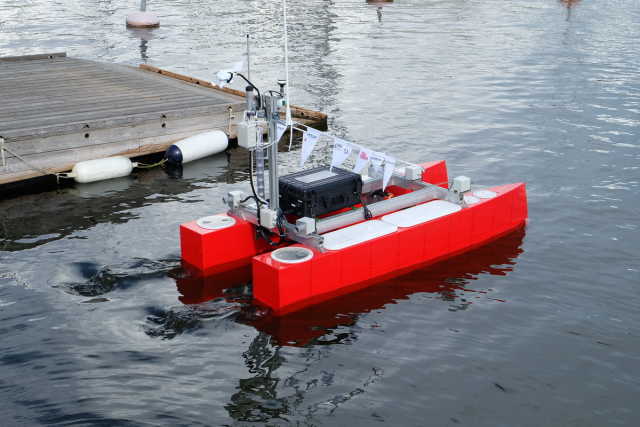
Experimental autonomous vessel NYMO
Latvian Navy
Latvia has the second longest coastal zone among the Baltic states (just under 500 km). The former Norwegian minelayer (VIDAR type) A-53 VIRSAITIS (in service since 2003) and the former Dutch (BUYSKES type) hydrographic vessel A-90 VARONIS (in service since 2004) are the two main units of the Latvian Navy (Latvijas Jūras spēki).
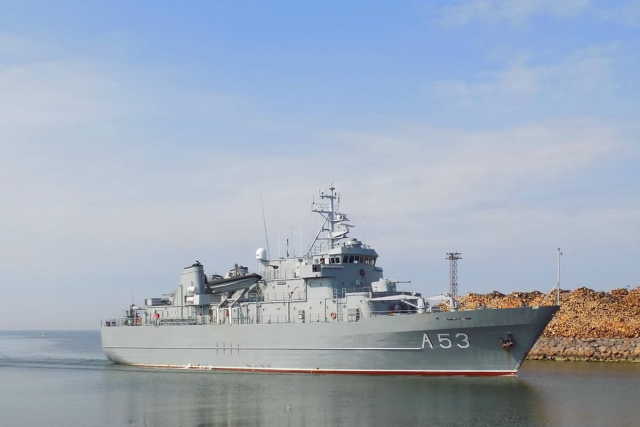
Minelayer A-53 VIRSAITIS of the Latvian Navy
Between 2011 and 2014, Jūras spēki commissioned five SWATH patrol ships of the SKRUNDA project – two were built in Germany (P-05 SKRUNDA and P-06 CĒSIS) and three in Latvia (P-07 VIESĪTE, P-08 JELGAVA and P-09 RĒZEKNE). Further expansion of capabilities occurred in October 2018, when Jūras spēki units received a gyrostabilized electron-optical/infrared (EO/IR) iSea-30HD surveillance system manufactured by Controp Precision Technologies.
Patrol ship P-05 SKRUNDA
Three of the five former Dutch TRIPARTITE-class minesweepers (M-04 IMANTA, M-05 VIESTURS, M-06 TĀLIVALDIS, M-07 VISVALDIS and M-08 RŪSIŠ), all commissioned between 2007 and 2011, will undergo major repairs by 2025. One of the remaining two will be withdrawn from the Navy. In September 2020, the French ECA Group received a contract worth 20 million euros for the modernization of three ships. An integrated Unmanned Mine Countermeasures Integrated System (UMIS) will replace the outdated hull sonar systems. The system includes underwater unmanned vehicles of the AUV A18-M type (with UMISAS synthetic aperture sonar) for mine detection and underwater robots of the SEASCAN MK2 and K-STER C types for identification and mine clearance.
These upgrades are considered by the Latvian Navy as a temporary solution before the fleet is replenished with new ships at the turn of the 2030s. It is possible that then Latvia will buy ships together with Lithuania. Moreover, the Latvian Navy recently indicated the possibility of purchasing a coastal anti-ship system.
Lithuanian Navy
Lithuania's coastline is only 100 km away. It is not surprising that compared to other Baltic countries, its Navy (Lietuvos Karinės jūrū pajėgos) is relatively small. Currently, there are no major procurement plans – the only expected tender for a new search and rescue ship (as a replacement for the former Soviet PGL ŠAKIAI) remains suspended. As for other fleets of the Baltic States, ensuring an effective mine action capability is a priority. Currently, two former British MCMVS are in service, namely: M53 SKALVIS and M54 KURŠIS. Both HUNT-class ships of the Royal Navy were commissioned in 2011. It is expected that the third ship will be commissioned into the fleet in 2023.
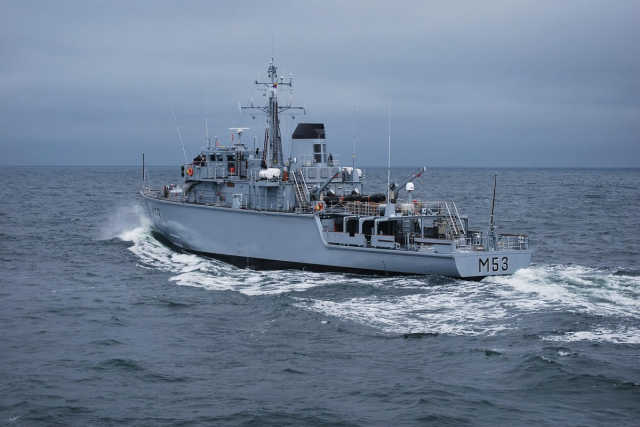
The M53 SKALVIS minesweeper of the Lithuanian Navy
Earlier in 2006, Lithuania acquired a former Norwegian multi-purpose ship of the VIDAR type (N42 JOTVINGIS), which is now used as a control/supply ship. Other important assets include four former Danish patrol ships of the FLYVEFISKEN project – P11 ŽEMAITIS, P12 DZŪKAS, P14 AUKŠTAITIS and P15 SĖLIS – transferred between 2008 and 2016. There are no plans to modernize these ships in the near future.
The materials of the article contain exclusively author's estimates and do not reflect the position of the editorial board of IVi
Based on the materials of the Maritime Defense Monitor magazine
